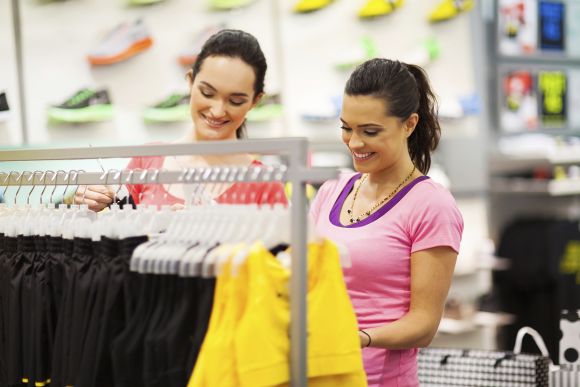Long gone are the days when high-fashion designers and retailers dictated what the latest fashions would be. Now, the power lies in the hands of consumers, with their choices transforming the industry.
For the past few years, both men and women started trading in their jeans for sweatpants, yoga attire and althleisure wear – and unapologetically wearing these fashions anywhere and everywhere.
As activewear becomes more popular, apparel retailers are awakening to the trend that is dominating the overall apparel market.
While other category segments have slowed, sports apparel and fitness clothing presents an entirely different picture.
Activewear sales grew more than four times faster than the $201 billion U.S. apparel industry, to reach $33 billion in 2013.
This year, activewear is projected to grow 3.3%, while the overall apparel category is only expected to grow 1.5%.
With the meteoric growth and the lucrative nature of this segment, it’s no surprise that traditional apparel retailers and high-end fashion designers are beginning to target activewear.
For example, H&M launched a new sportswear line in January and in 2011 Gap began opening brick and mortar locations for Athleta, its yoga-wear line that was previously only sold online, and has plans to open 30 more stand-alone Athleta stores this year.
The activewear category offers a lot of potential, and like moths to a flame many brands are considering the move. However, the category won’t necessarily perform for every fashion brand. As such, brands shouldn’t be entering this space just for the sake of trying to take a piece of the hottest new growth segment.
For brands to be successful when they enter into this category, it will be critical for them not to lose their brand identity in the process.
Free People’s Movement collection, for instance, includes pieces specifically made for activities like ballet, yoga and surfing, which keep in line with the company’s overall culture and philosophy. If Free People had introduced an athletic line for more intense activities like running, it might not have been successful.
The Bottom Line:
The apparel market is on the edge of a major change as activewear lures retailers in by its untapped potential, which will eventually lead to a more competitive landscape. This means that success will ultimately require a deep understanding of your brand, your customers and how to craft a solid real estate and marketing strategy. Retailers will need to know what types of offerings will resonate with their core customers.
Smarter brands are moving toward a data-driven approach, using customer analytics to provide a potential analysis, profiles of their prospective activewear customers, and a growth plan to optimize their merchandise categories.
As retailers are increasingly faced with daunting challenges in a progressively crowded marketplace, customer analytics can help your brand stand out with a sharper perspective of your core customers.
If you’re interested in learning more and exploring this growth avenue, download our latest report “The Pocket Guide to the Apparel Industry” or reach out to us. We can help get you to where you want to go.
Our sales team will reach out to setup a demo.



